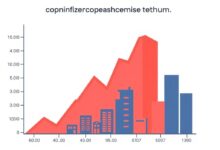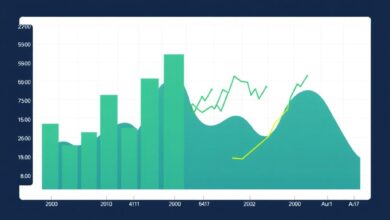What is financial compounding and why it’s magical

Consider reinvesting your earnings to harness the power of compound interest. By allowing your profits to grow over time, you create a cycle that accelerates wealth accumulation. Each period of reinvestment not only adds to your principal but also increases the overall returns on your investment.
Utilizing this strategy effectively requires patience and discipline. The longer you let your money work for you, the more pronounced the effects become. A simple investment today can yield substantial rewards in the future, as compounding generates returns on both initial capital and previously earned interest.
To truly benefit from this approach, aim for consistent contributions. Regularly setting aside a portion of your income and reinvesting it can significantly enhance your financial trajectory. Remember, time is one of your greatest allies in building wealth through reinvestment.
What is Financial Compounding?
The essence of growth in investments lies in the principle of accumulating earnings on both initial capital and previously earned interest. This process, often referred to as reinvestment, showcases how time amplifies wealth. The longer the duration, the more significant the impact on returns.
To illustrate, consider a scenario where an investment generates a 5% annual return. If $1,000 is invested today, it will grow to approximately $1,628 over 10 years due to the power of reinvested earnings. This exponential increase demonstrates that patience and time are key factors in maximizing financial potential.
Strategically reinvesting profits rather than withdrawing them can lead to substantial wealth accumulation over extended periods. It’s not merely about the rate of return but how long those returns can compound. Setting goals with a long-term perspective enables individuals to harness this growth effectively.
In summary, focusing on time and reinvestment strategies enhances financial outcomes significantly. The choice to allow your money to work for you through compounding can create a powerful path toward financial independence.
How Interest Rates Affect Growth
To maximize growth, prioritize investments with higher interest rates. A mere 1% difference in rates can significantly influence your returns over time, especially when reinvestment strategies are applied.
For example, an initial investment of $10,000 at a 5% annual interest rate will yield approximately $16,288 over 10 years through reinvestment. However, increasing the rate to 6% results in about $17,908 for the same period. The compounding effect amplifies these differences over longer durations.
Track changes in interest rates closely. When rates rise, consider reallocating funds into vehicles that offer better returns. Conversely, during low-rate environments, explore alternative options such as stocks or real estate to enhance potential growth.
Incorporate regular contributions into your investment plan. Consistent reinvestment of earnings and additional savings can leverage even modest interest rates into substantial future wealth.
Ultimately, understanding how fluctuations in interest impact your financial trajectory is key to achieving long-term goals. Adjust your strategies accordingly to harness the full potential of your investments over time.
Compounding Frequency Explained
The frequency at which interest is calculated and added to the principal significantly impacts growth. More frequent compounding results in greater accumulation over time. For instance, if interest is compounded annually, you’ll receive interest just once per year. However, compounding quarterly or monthly allows for multiple calculations within the same timeframe, leading to an increased effect of compound interest.
Consider this: with a 5% annual interest rate compounded monthly versus annually, your investment will yield more at the end of the year due to the additional calculations. The formula for compound growth reflects this; it incorporates the number of times interest is applied within a year.
To maximize returns, choose options that offer higher compounding frequencies whenever possible. This strategy ensures that reinvestment occurs more often, enhancing overall returns on investments. Always compare different financial products based on their compounding intervals before making decisions.
In summary, selecting investments with frequent compounding can lead to significant advantages over time, amplifying your wealth through enhanced reinvestment strategies.
Strategies for Maximizing Returns
Invest in assets with higher compound interest rates. Equity markets often outperform fixed income over the long haul, providing greater growth potential. Research and select funds or stocks with a strong historical performance.
Utilize tax-advantaged accounts like IRAs or 401(k)s to maximize returns. Contributions to these accounts grow without immediate taxation, enhancing overall time value of your investments.
Consider automatic contributions to ensure consistent growth. Setting up regular transfers into your investment account can leverage dollar-cost averaging, reducing the impact of market volatility on your long-term strategy.
Reinvest dividends and interest payments. This practice accelerates the compounding effect, allowing you to generate additional earnings on previously earned income, further enhancing your growth trajectory.
Stay invested for the long term. Avoid the temptation to cash out during market fluctuations; instead, maintain your investment strategy to fully benefit from compounding over extended periods.
Diversify your portfolio across various asset classes. This approach mitigates risk while maximizing potential returns by capturing growth in different sectors or geographical areas.
Regularly review and adjust your investment strategy based on performance metrics. Monitoring allows you to capitalize on high-growth opportunities while minimizing exposure to underperforming assets, ensuring that time is spent wisely working towards optimal results.
Common Misconceptions About Compounding
It’s crucial to clarify some widespread myths surrounding interest accumulation. Here are the most common misconceptions:
- Time is not a factor: Many believe that the duration of investment does not significantly influence returns. In reality, the longer money is invested, the more pronounced the effects of reinvestment become, amplifying growth exponentially.
- Only large amounts matter: Some assume substantial initial investments are necessary for significant gains. However, even small sums can grow impressively over time through consistent reinvestment and compounding effects.
- Interest rates have negligible impacts: A prevalent myth suggests that minor differences in interest rates do not affect overall returns. In truth, even slight variations can lead to dramatic differences in final amounts due to the power of compounding over extended periods.
- Compounding applies only to savings accounts: This notion limits understanding. In fact, various investment vehicles–stocks, bonds, and mutual funds–also benefit from this principle when earnings are reinvested.
- You only need to invest once: Some think a single investment will suffice for long-term wealth. Regular contributions enhance potential returns significantly by maximizing opportunities for reinvestment and compounding growth.
Acknowledging these misconceptions allows for better financial decisions and strategies. Emphasizing time and consistent reinvestment can enhance your portfolio’s performance remarkably.







